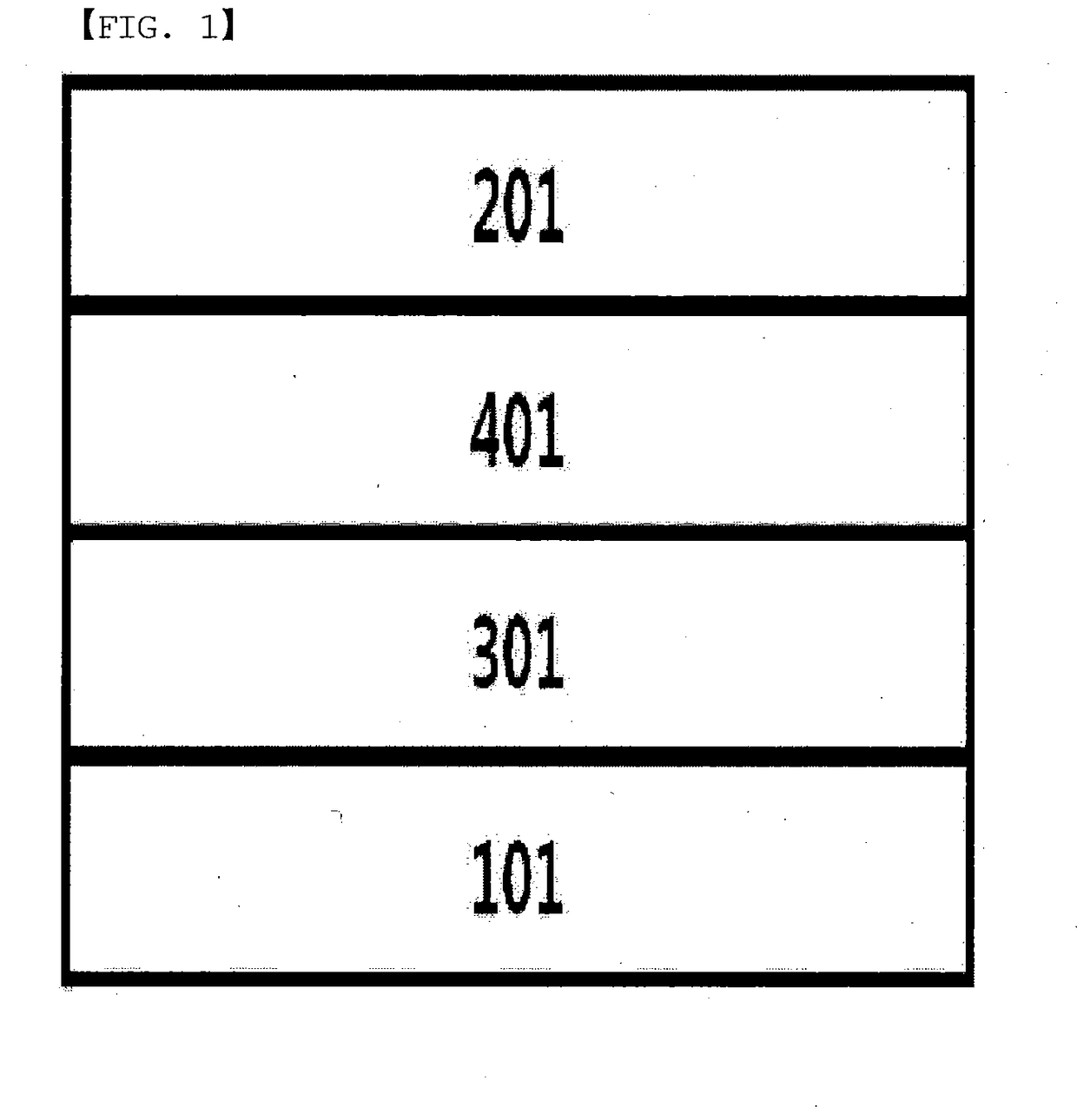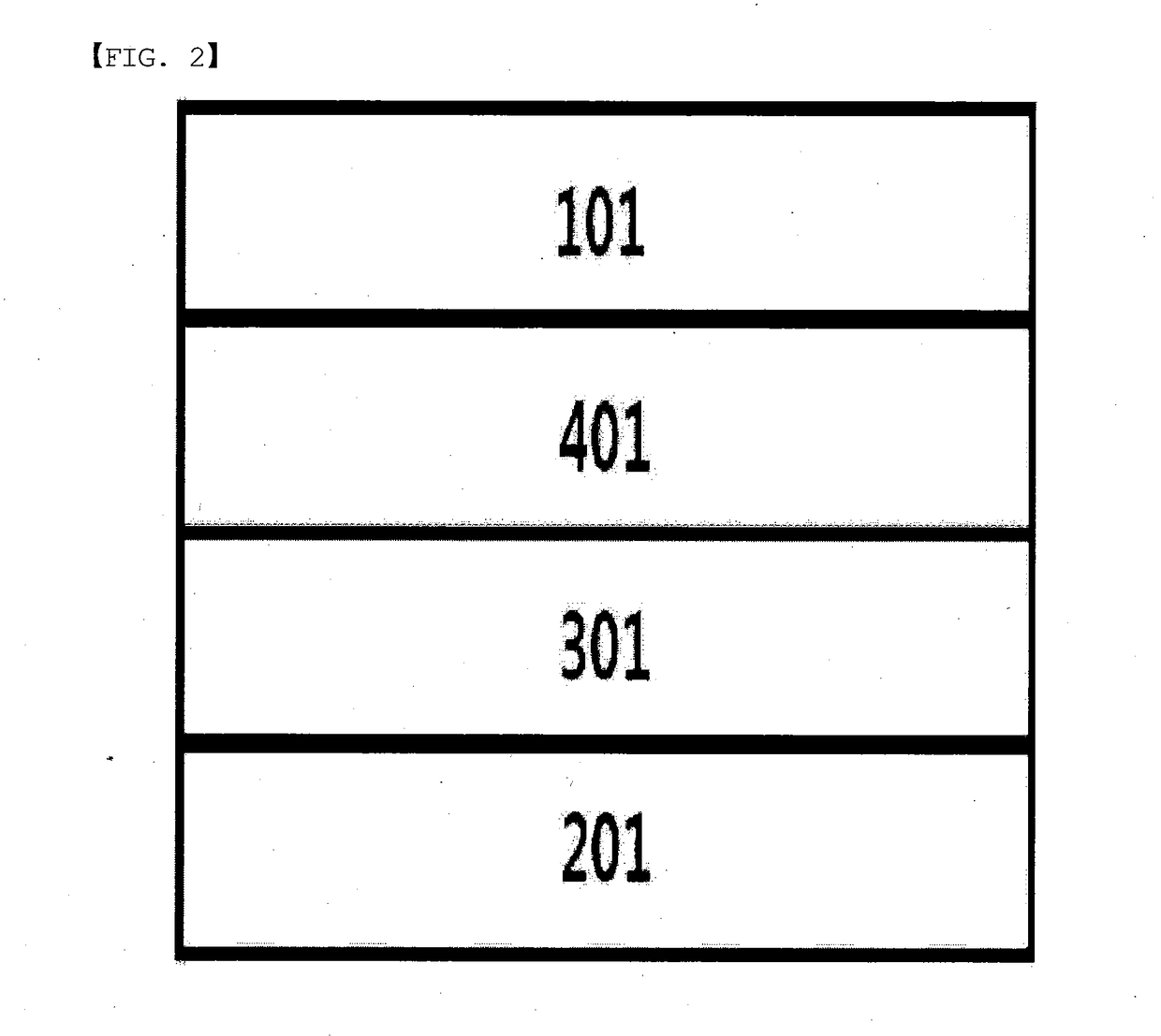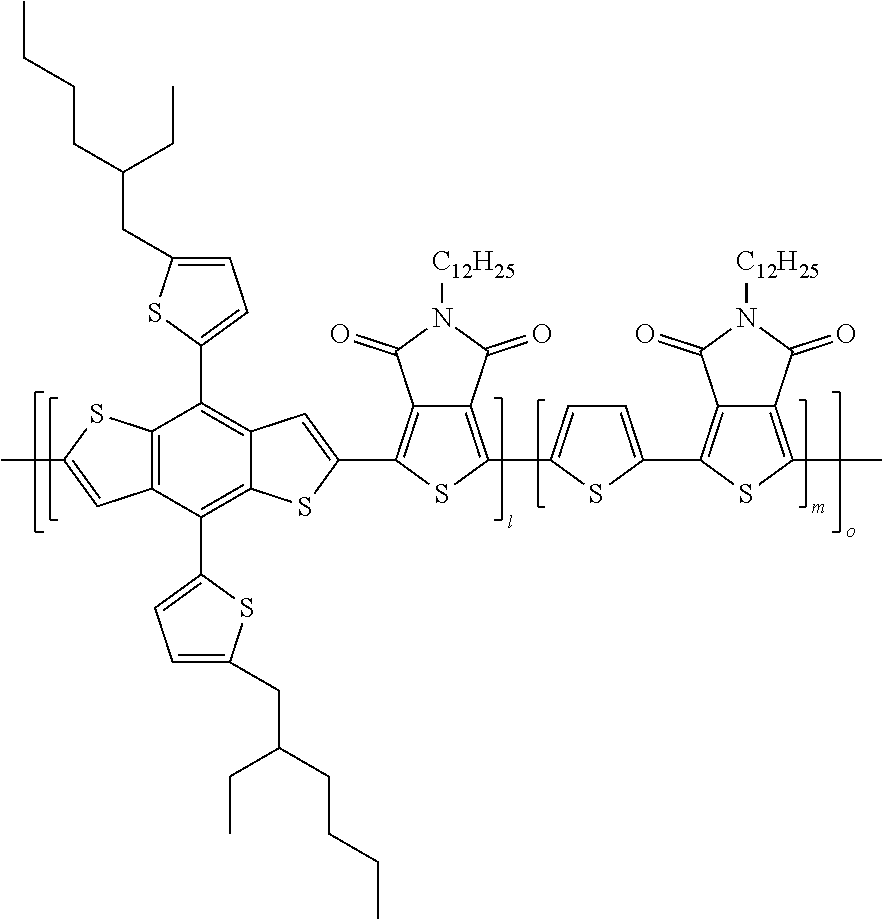Organic solar cell and method for manufacturing same
a solar cell and organic technology, applied in the direction of photovoltaic energy generation, semiconductor devices, solid-state devices, etc., can solve the problems of increasing the emission of carbon dioxide and other greenhouse gases into the air, reducing the economic feasibility of existing inorganic solar cells, etc., to achieve the effect of reducing the cost of production, and reducing the amount of was
- Summary
- Abstract
- Description
- Claims
- Application Information
AI Technical Summary
Benefits of technology
Problems solved by technology
Method used
Image
Examples
example 1
[0077]In order to synthesize a copolymer included in a photoactive material according to one embodiment of the present specification, the copolymer was formed by the following Reaction Formula 1.
[0078]Chlorobenzene (15 ml), 2,6-bis(trimethyltin)-4,8-bis(2-ethylhexyl-2-thienyl)-benzo[1,2-b:4,5-b′]dithiophene (0.7 g, 0.7738 mmol), 2,5-bis(trimethylstannyl)thiophene (0.3171 g, 0.7738 mmol), 1,3-dibromo-5-dodecylthieno[3,4-c]pyrrole-4,6-dione (0.7418 g, 1.548 mmol), tris(dibenzylideneacetone) dipalladium (0) (Pd2(dba)3, 28 mg), tri-(o-tolyl)phosphine (37 mg) were placed in a microwave reactor vial, and reacted for 1 hour under a 170° C. condition. The mixture was cooled to room temperature, methanol was poured thereinto, and then solids were filtered and then Soxhlet extracted using methanol, acetone, hexane and chloroform. The chloroform portion was precipitated again in methanol to filter solids.
example 2
[0079]In order to prepare a PEI solution, PEI and 1-butanol were mixed in a mass, ratio of 1:499, and stored for 24 hours or longer. A photoactive layer solution was prepared to have an approximately 3 wt % concentration employing a donor and an acceptor (CF, CB, ODCB or mixed solution of two or more thereof) in a 1:2 ratio.
[0080]The photoactive layer solution according to one embodiment of the present specification was prepared by adding the PEI solution to the photoactive layer solution prepared above. In the structure (ITO / 125:PC61BM:PEI / MoO3 / Ag) prepared according to one embodiment of the present specification, 1,2,4-trichlorobenzene was included in 3% by weight, and a device was manufactured by coating while maintaining the temperature of the substrate and the temperature of the photoactive layer solution identically at 40° C.
PUM
| Property | Measurement | Unit |
|---|---|---|
| temperature | aaaaa | aaaaa |
| density | aaaaa | aaaaa |
| boiling point | aaaaa | aaaaa |
Abstract
Description
Claims
Application Information
 Login to View More
Login to View More - R&D
- Intellectual Property
- Life Sciences
- Materials
- Tech Scout
- Unparalleled Data Quality
- Higher Quality Content
- 60% Fewer Hallucinations
Browse by: Latest US Patents, China's latest patents, Technical Efficacy Thesaurus, Application Domain, Technology Topic, Popular Technical Reports.
© 2025 PatSnap. All rights reserved.Legal|Privacy policy|Modern Slavery Act Transparency Statement|Sitemap|About US| Contact US: help@patsnap.com



